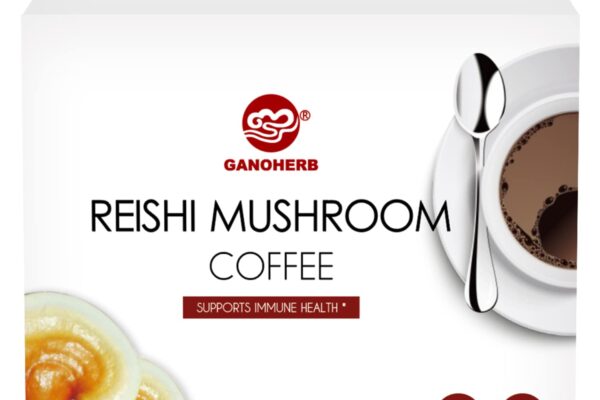Blog
The Best Way to Make Chaga Mushroom Tea
Chaga is an interesting functional fungus with numerous health benefits. While much has been written online extolling its medicinal qualities, there have been no human clinical studies conducted demonstrating their use.
Discover more about Chaga, how to sustainably harvest it and craft an antioxidative-rich tea for better immune support.
Stovetop Brewing
Stovetop brewing is the best way to prepare chaga mushroom tea. This method involves simmering chunks or powder for an appropriate period in water in order to extract its beneficial compounds. This simple and straightforward procedure gives you ample opportunity to experiment with different brew times, giving you more insight into your preferred steep times and flavor profiles.
Properly prepared chaga mushroom tea can be enjoyed both hot and cold beverages alike; its rich in natural antioxidants provides numerous health benefits.
Though many assume chaga mushroom tea to taste bitter and unpleasant, its earthy notes can actually be enhanced with maple syrup, honey, milk or cinnamon added into your tea beverage. A touch of vanilla adds even more sweetness if needed! With all these options at your fingertips you can fully experience your chaga tea experience without compromising its health benefits.
Stovetop brewing is an ideal method of teamaking as it enables you to focus on other tasks while your chaga brews on its own, making this method ideal for busy individuals either working from home or running errands. Furthermore, this cost-effective brewing technique ensures you get the most from your chaga.
This method is ideal for individuals new to chaga tea, or looking for an easier brewing method. Simply heat water slightly above your desired mash temperature, and slowly simmer it with the chaga chunks for up to one hour – the longer they simmer, the stronger their tea will be! You may re-use these chunks twice more, depending on how soft and flexible they still remain.
Chaga is a fungus found on birch trees that has long been utilized as part of traditional medicine. Renowned for its antioxidant properties and versatile versatility in recipes to produce tasty yet nutritional infusions, this guide will teach you how to make Chaga Tea at Home as well as provide tips on proper storage to maintain freshness.
Hot Water Extraction
If it comes to chaga mushroom tea, there are numerous methods of preparation. From creating tinctures and tea to supplements and taking it as a supplement. Chaga can offer significant health benefits that other medicinal mushrooms cannot; to maximize these advantages it’s essential that the tea be brewed correctly for maximum effect.
To increase bioavailability of chaga’s beneficial compounds, it’s recommended that a dual extraction process is utilized. This involves both alcohol and hot water extraction methods to release all of its beneficial properties into liquid form; an alcohol extract also helps preserve sterols and betulinic acid found in chaga. Thus it should be avoided since these will not provide as many health benefits.
Home hot water extraction of dried chaga can be accomplished easily at home by mixing dried powder with boiling water and simmering it for several hours, then straining off and drinking as a tea once it has cooled off. This method requires minimal equipment.
Harvesting chaga in an eco-friendly way is absolutely crucial to its preservation. Over-harvesting not only depletes stocks but can also wreak havoc on birch trees that provide essential habitat for these fungi to thrive. When foraging for your own chaga, only take approximately 1/4th of what you come across each time – this will allow healthy colonies of the rest to develop over time.
Chaga has long been recognized for its abilities to strengthen immunity, fight inflammation, protect heart health and fight cancer. Most commonly consumed forms are as tea or tincture; both can easily be found at stores and online retailers as tea bags, supplements or powder forms; however it’s best to select companies committed to sustainability using dual extraction processes for best results.
Cold Water Extraction
Chaga, an ancient herbal remedy derived from birch trees, contains various vitamins, minerals, antioxidants and phytonutrients which have been scientifically shown to aid with immune system support, increase energy levels, promote weight loss and treat cancer.
To make Chaga mushroom tea, simply fill a pot with cold water and add one fist-sized chunk of Chaga to it. Bring to a boil, reduce to simmer, and enjoy! Simmering will intensify its flavors; sweeten with honey, maple syrup or milk depending on taste preferences; it can even be stored in the fridge up to one week.
Note that for this method to work effectively, wild-harvested chaga should be used, as cultivated chaga may contain harmful chemicals and pesticides that could pose risks.
To ensure the best results, it’s ideal to use a large pot when brewing chaga mushroom tea. This ensures the necessary amount of water is used so as to extract all its benefits as effectively as possible from the mushroom, while simultaneously helping reduce steam escapeance while boiling the mixture.
Winter is the optimal season for harvesting chaga for tea-making purposes, as this is when its potency and beneficial compounds reach their maximum levels. Eric Whitehead from Untamed Feast provides an informative video on YouTube about hunting and harvesting chaga as well as best methods for making tea from it.
Chaga mushroom used for extraction should be utilized multiple times until it stops discoloring the water, at which time alcohol should be applied to extract any remaining lipid-soluble compounds that remain. Once extracted multiple times, chaga can be stored in the freezer to be used again when needed. While similar medicinal mushrooms such as Reishi and Turkey Tail possess both preventative and curative benefits, Chaga is more widely utilized due to its anti-inflammatory effects.
Harvesting
If you have access to wild chaga, harvest it yourself and use it in making tea for yourself. Though this process can be time consuming and laborious, the payoff can be enormously satisfying with tasty tea that offers many health advantages.
To harvest chaga, find an established growth on a healthy birch tree and carefully pry away its thick layer with a hatchet or hammer. However, this task can be tricky due to how firmly chaga encases itself within its host tree’s trunk – be mindful when harvesting this mushroom as taking too much could harm its ecosystem and kill your host tree altogether! To do it responsibly: When harvesting chaga mushrooms it’s important not to harvest too much as that could destroy its ecosystem along with it.
After harvesting chaga, allow it to dry in a warm and dark area until all moisture has evaporated before breaking it up into smaller pieces for use in brewing. Alternatively, there are many online retailers who sell fresh organic chaga for sale; or for even higher potency you could purchase processed powder form of this nutritive herb.
Chaga mushroom tea is an abundant source of vitamins, minerals, antioxidants, and phytonutrients – offering energy boost and supporting strong immunity systems. Furthermore, it may act as an anti-inflammatory and source of betulinic acid, helping reduce heart disease risk as well as potentially protecting against cancer.
Chaga can be enjoyed best as a brew, and there are multiple methods of preparation. Be sure to follow the brewing instructions and tips above for maximum effectiveness of this infusion! Additionally, use it in coffee or other recipes; grind into fine powder for garden compost enriched soil enrichment purposes; or scatter around as an air freshener!



